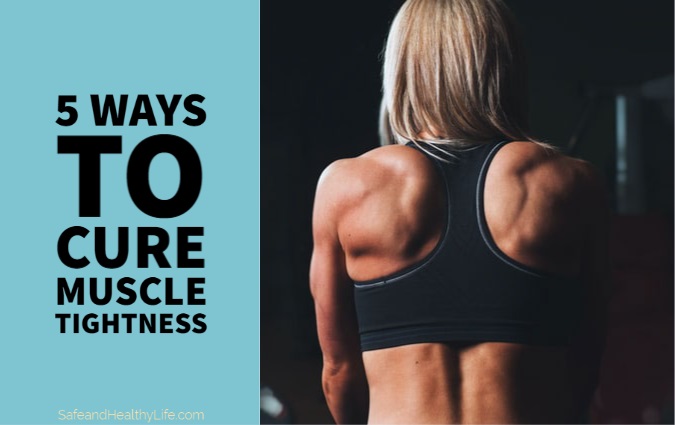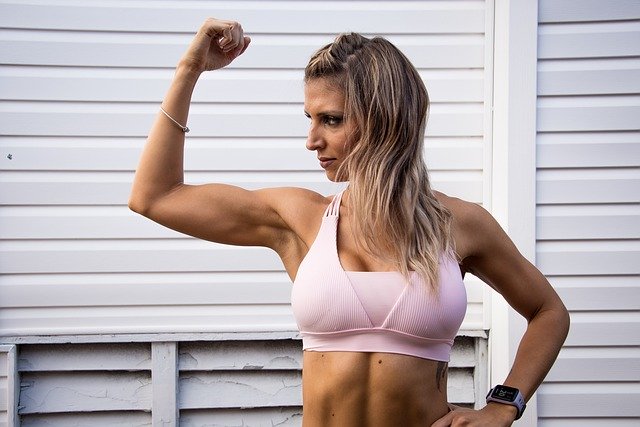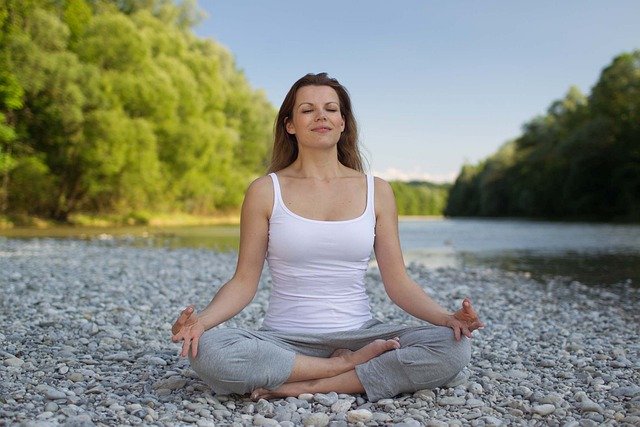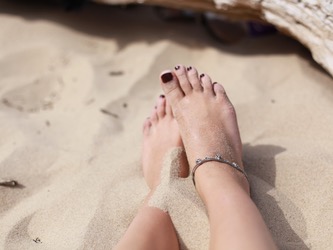
Physical activity and regular workouts are good for you. They will help you shed some pounds, keep fit, and stay healthy.
However, you might experience muscle tightness after exercises. Tight muscles are not only painful, disabling, and frustrating, but can also limit your movements.
Muscle tightness occurs due to various reasons such as prolonged inactivity period, during, and after workouts.
It can affect muscles in different parts of the body, but it’s common in leg muscles. When your muscles tighten, it means blood has been squeezed out of them.
Therefore, loosening the muscles will not only minimize your risk of injury and relieve stress, but enhance your overall sports performance.
During a prolonged period of inactivity, some muscles get tight due to limited or restricted movement. As you’re seated, the hips are in a fixed or bent position.
As a result, the hip flexors will be in a shortened position, while glutes will be in a lengthened position.
Over time, this leads to muscle imbalances as the lengthened muscles get weak and shortened muscles to get tight. If you’re keen, you’ll notice most people have underdeveloped glutes and poor posture.
Fortunately, there are several ways you can cure muscle tightness, including;
Stretching

Photo by tacofleur from Pixabay
According to the World Health Organization, 1 in 4 adults are inactive. The modern life has rendered most people sitting for long hours in cars, in front of computers and couches. This leaves people hunched over and in unceasing pain.
The human body mechanism is designed to be in perpetual motion. Hence, doing nothing can actually cause problems.
Fortunately, it’s also flexible and extremely efficient to adapt almost promptly to demands placed on it.
When you become active, the muscles heighten their biomechanical, metabolic, and neuromuscular machinery to accommodate the new changes.
With short, effective movement breaks, you can quickly un-desk your muscles and minimize the health risks associated with inactivity.
Try to stand up after every 30 -45 minutes and perform the following movements throughout the day.
- Lateral Lean Lat Stretch – Stand upright and clasp the fingers behind the head, ensure you don’t strain the neck. Both feet should remain grounded on the floor and slowly turn the head to the left elbow. Maintain and hold onto this position for 30 seconds, and repeat on the right side.
- 6 O’clock Fingers Stretch – Hectic schedules and trying to beat tight deadlines will leave you seated for long hours in front of your keyboard. Your arms will be a forced position, leaving the wrist and elbow in pain. The 6 o’clock stretch requires you to stand and place the hands on the surface. Rotate hands to ensure your fingers are facing the body to create a “6 o’clock” position.
- Standing Figure-4 Stretch – Sitting for prolonged hours shortens the hip flexors and makes the glute lose functionality and strength. This puts pressure on the lumbar spine. Place the hands on your desk and raise the right ankle above the kneecap of the left knee. It will eventually create a “4” position. Repeat this on the other side. For effectiveness, hold the stretch for 30 seconds after every 1 or 2 hours throughout the day.
1. Massage

Photo by alan caishan from Unsplash
Massage has an array of benefits such as reduced tension, enhance a range of movement, and minimize pain. According to a study, massage is believed to reduce muscle stiffness and offer desirable recovery from workouts.
Muscle tine leads to increased tension, which can be reduced by massage. Massaging increases blood circulation, removal of waste products, and temperature of the soft tissues.
Increased blood circulation to the muscles will deliver more nutrients and oxygen to the soft tissues.
Hypertonicity in your muscles will reduce blood flow, leading to muscle tightness. With a massage, the muscles will relax, tension will reduce, and tone decreases.
If you’re experiencing muscle tightness, you might consider buying the best deep tissue massager machine. You can also opt for frequent massage treatment in a spar.
2. Boost Your Core Strength

Tight muscles might occur due to a weak core. Your core is the center of your strength. That’s why experts always advise people to lift to get lean.
Whether you’re putting on shoes or pushing a grocery cart, you use the core to accomplish your daily tasks. It also has an effect on your stability, balance, and posture.
The core is not limited to the abdominal muscles. It involves muscles around your pelvis and back. So, when the core is weak, the pelvis and spine will get out of proper alignment, risking tight muscles.
Crunches, plank, bird dog, and mountain climbers are effective workouts that will strengthen your core. Strengthening your core will also help in alleviating back pains.
3. Strength Training

Photo by Anastase Maragos from Unsplash
You can reap immense benefits through strength training. A few sessions per week will boost your overall health and cure muscle tightness.
You can do resistance training with dumbbells, free weights, weight machines, barbells, or without equipment.
4. Practice Yoga

Photo by feelgoodjunkie from Pixabay
Yoga is said to around for over 5,000 years. This form of training uses various techniques to stretch, lengthen, and relax muscles. There are many yoga styles, and you’ll likely find one that suits you.
Wrap Up
With these easy and affordable techniques, you can cure muscle tightness and live a healthy, painless life.
About The Author:
Allyn is a content writer who specializes in health, fitness, and wellness. He has a passion for learning all he can about health and fitness. He also enjoys providing health tips to those looking for ways to improve their health and feel better in their daily life.




